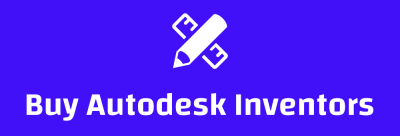Sustainability Software Tools Market | Global Industry Analysis by Trends, Size, Share, Company Overview, Growth and Forecast by 2028 – Talking Democrat
“
Sustainability Software Tools Industry Report Coverage: Key Growth Drivers and Challenges, Regional Segmentation and Outlook, Key Industry Trends and Opportunities, Competitive Analysis, COVID-19 Impact Analysis and Projected Recovery , market size and forecast
A recent market research report added to the repository of Global Market Vision is an in-depth analysis of the global market of the Sustainable Development Software Tools industry. Based on the historical growth and current scenario of the Sustainability Software Tools industry market scenario, the report aims to offer actionable insights into the growth projections of the global market. The authenticated data presented in the report is based on the results of extensive primary and secondary research. The insights gained from the data are great tools that facilitate a deeper understanding of several aspects of the global sustainability software tools market. This further helps the user in his development strategy.
This report examines all the key factors influencing the growth of the Global Sustainability Software Tools Industry Market including demand-supply scenario, pricing structure, profit margins, production, and value chain analysis. The regional assessment of the global Sustainability Software Tools industry market unlocks a plethora of untapped opportunities in regional and country-level markets. Detailed company profiling allows users to assess company stock analysis, emerging product lines, NPD’s reach into new markets, pricing strategies, opportunities for innovation and more. Moreover.
Get | Download Sample Copy with TOC, Charts and List of Figures @ https://globalmarketvision.com/sample_request/133214
Analysis of key players:
Curo, Axxerion CMMS, CenterStone, FM:Interact, Asset Essentials, MaintiMizer, Wattics, vx Maintain, IBM TRIRIGA, VFA Capital Planning, Dude Solutions, Entronix EMP, DEXCell Energy Manager, CAFM Explorer.
Market segmentation :
The Sustainability Software Tools market is segmented by Company, Region (Country), by Type, and by Application. Players, stakeholders, and other participants in the global Sustainability Software Tools market will be able to gain the upper hand as they use the report as a powerful resource. The segmental analysis focuses on Revenue and forecast by Type and by Application in terms of revenue and forecast for the period 2021-2028.
Based on type:
Cloud-based, on-premises
Based on an application:
SMEs, Large Companies
Regional Coverage of the Sustainability Software Tools Market
– North America (United States, Canada, Mexico)
– Europe (UK, France, Germany, Spain, Italy, Central and Eastern Europe, CIS)
– Asia-Pacific (China, Japan, South Korea, ASEAN, India, Rest of Asia-Pacific)
– Latin America (Brazil, rest of LA)
– Middle East and Africa (Turkey, GCC, Rest of Middle East)
This study also covers company profiling, product specifications and picture, sales, market share and contact information of various regional, international and local vendors of the global Sustainability Software Tools market. The market proposition is changing frequently with increasing scientific innovation and M&A activity in the industry. Additionally, many local and regional vendors offer specific application products for various end users. New candidate traders in the market find it difficult to compete with international suppliers based on reliability, quality and modernity of technology.
Contents:
Chapter 1: Introduction, Market Driving Product Objective of Study and Research Scope Sustainability Software Tools Market
Chapter 2: Exclusive Summary – the basic insights of the Sustainability Software Tools Market.
Chapter 3: Viewing Market Dynamics – Drivers, Trends and Challenges of Sustainability Software Tools
Chapter 4: Introducing Sustainability Software Tools Porters Five Forces Market Factor Analysis, Supply/Value Chain, PESTEL Analysis, Market Entropy, Patent/Trademark Analysis.
Chapter 5: Display of by type, end user and region 2015-2020
Chapter 6: Assessment of the leading manufacturers of the Sustainability Software Tools Market which includes its Competitive Landscape, Peer Group Analysis, BCG Matrix and Company Profile
Chapter 7: To assess the market by segments, by countries and by manufacturers with revenue share and sales by key countries in these various regions.
Chapter 8 & 9: Display of appendix, methodology and data source
Conclusion: At the end of the Sustainability Software Tools Market report, all findings and estimates are given. It also includes key drivers and opportunities along with regional analysis. Segment analysis also provides in terms of type and application both.
Directly Buy This Market Research Report Now @ https://globalmarketvision.com/checkout/?currency=USD&type=single_user_license&report_id=133214
If you have any special requirements, please let us know and we will offer you the report at a custom price.
About Global Market Vision
Global Market Vision consists of an ambitious team of experienced young people who focus on details and deliver information according to customer needs. Information is vital in the business world and we specialize in its dissemination. Our experts not only have in-depth expertise, but can also create a comprehensive report to help you grow your own business.
With our reports, you can make important tactical business decisions with the certainty that they are based on accurate and grounded information. Our experts can dispel any concerns or doubts about our accuracy and help you differentiate reliable reports from less reliable reports, reducing the risk of making decisions. We can make your decision-making process more accurate and increase the likelihood of achieving your goals.
Contact us
Sarah Ivans | Business development
Phone: +1-3105055739
E-mail: [email protected]
Global vision of the market
Website: www.globalmarketvision.com


Comments are closed.